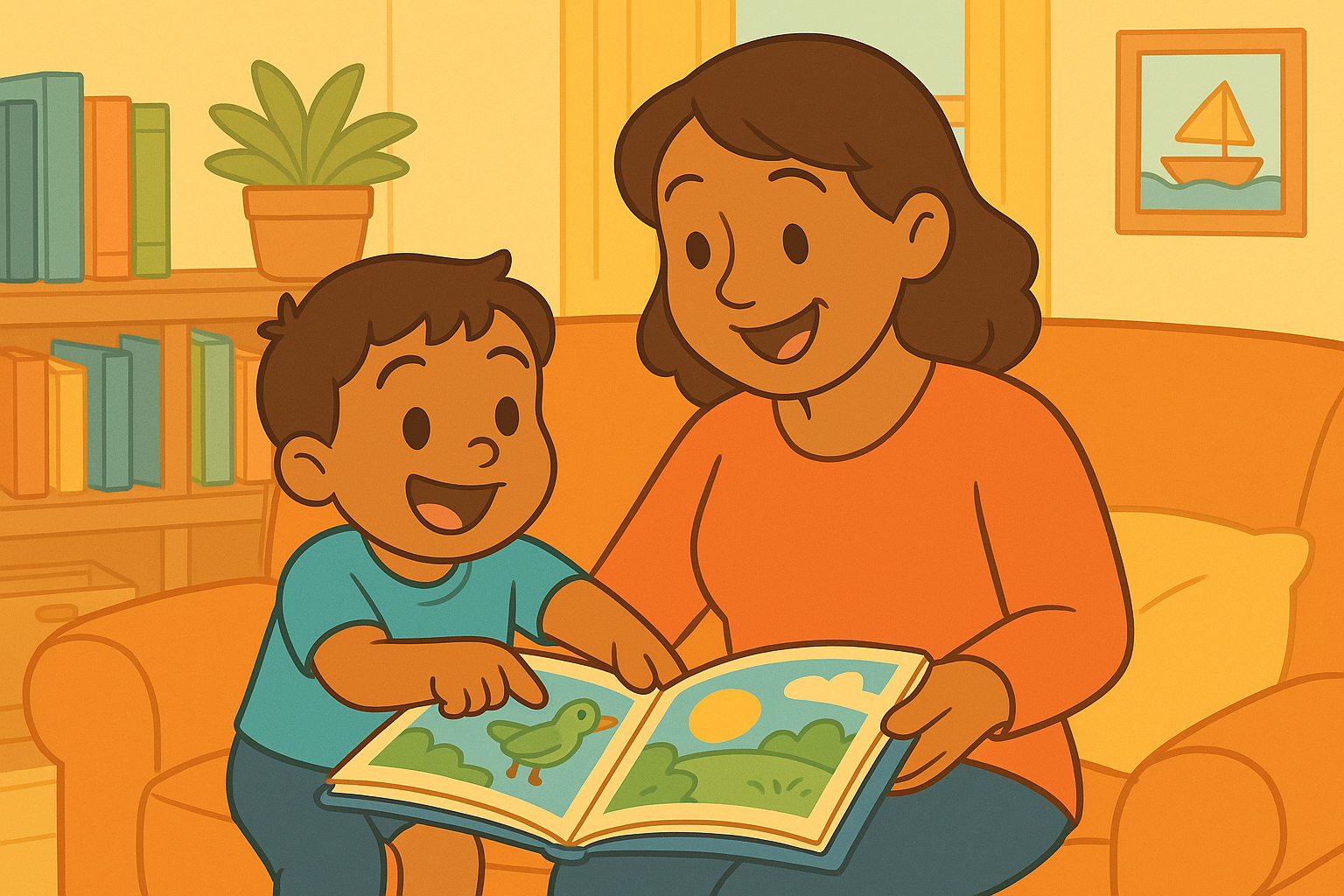Encouraging Confidence in Early Readers
Encouraging Confidence in Early Readers
Why Confidence Matters More Than Perfection
When children are just beginning to read, confidence is everything. Before fluency or comprehension, they need to believe: “I can do this.”
Early reading success doesn’t come from memorizing sight words alone — it grows from positive experiences, patient support, and joyful connections with books.
When reading feels safe and fun, children approach it with curiosity instead of pressure. That’s how a lifelong love of learning begins.
(Related read: The Benefits of Reading Aloud Every Day)
What Early Reading Confidence Looks Like
A confident early reader might:
Point to words and pictures while reading aloud
Guess unknown words using clues
Reread familiar books again and again
Make up stories from pictures
Feel proud to “read” to you or a sibling
They’re experimenting with rhythm, sounds, and meaning — all early signs of literacy growth.
Confidence doesn’t mean perfection. It means feeling brave enough to try.
(See also: How to Encourage Curiosity About Letters and Words)
Step 1: Create a Joyful Reading Routine
Children thrive on predictability. Set aside a regular time each day for reading — even just 10 minutes.
Make it cozy: snuggle up with a blanket, soft light, and a favorite stuffed animal. These comforting details make reading feel like a reward, not a chore.
You can start by reading to your child, then gradually invite them to join in:
“Can you help me with this word?”
“Let’s read this page together.”
The goal is connection — not correction.
Step 2: Choose Books That Empower
Select books that match your child’s interests and reading level. Early readers build confidence when they can successfully finish a book and understand its story.
Look for:
Repetition: Predictable phrases like “Brown Bear, Brown Bear” or “The Very Busy Spider.”
Rhythm and rhyme: Books with pattern and flow encourage participation.
Familiar characters or topics: Kids love stories about things they know — pets, family, favorite animals, or daily routines.
(Try this too: Using Puppets to Reenact Books and Stories)
Let your child choose the book sometimes — ownership builds excitement and self-motivation.
Step 3: Celebrate Effort, Not Accuracy
Early readers often stumble, skip words, or substitute one for another. That’s part of the process!
Instead of jumping in with corrections, pause and encourage self-correction:
“Hmm, does that look right?”
“Let’s check the picture — what could that word be?”
Praise progress over perfection:
“You figured that out all by yourself!”
“You didn’t give up when it was tricky — that’s what good readers do!”
This builds persistence and pride, two traits that carry kids far beyond reading.
(Also read: The Power of Positive Reinforcement in Early Learning)
Step 4: Use Playful Reading Techniques
1. Echo Reading
You read a line first, and your child repeats it. It builds fluency and confidence through imitation.
2. Choral Reading
Read aloud together — this helps them hear rhythm and phrasing without pressure.
3. Fill-in-the-Blank Reading
Pause before familiar words:
“Goodnight, ____.” (Moon!)
It’s a simple way to build word recognition and confidence at once.
4. Act It Out
Use puppets or gestures to bring stories to life. Acting out scenes helps children connect emotionally to language and remember words more easily.
(Try this: Using Puppet Conversations to Teach Vocabulary)
Step 5: Make Reading a Shared Adventure
Show your child that reading isn’t just for “learning” — it’s for fun, imagination, and connection.
Try:
Reading menus, signs, or grocery labels together
Starting a “family book basket” in the living room
Visiting the library weekly and letting your child get their own card
Making “reading forts” or outdoor story time under a tree
Every positive reading experience strengthens your child’s identity as a reader.
Step 6: Be a Role Model
Children copy what they see. Let them see you reading — books, magazines, even recipes. Mention what you enjoy:
“This story made me laugh!”
“I love learning new words.”
When reading feels like something the whole family enjoys, kids naturally want to join in.
(See also: Turning Playtime Into a Language-Rich Experience)
Step 7: Handle Reading Frustration Gently
It’s normal for children to get tired or discouraged, especially when learning something new.
When frustration arises:
Take a short break — come back later with fresh energy.
Praise what went well before stopping.
End on a positive note (“You read that page perfectly — let’s finish the rest tomorrow!”).
Building reading confidence takes time — but every small win adds up.
Bringing It All Together
Confidence grows from connection, encouragement, and small successes.
When children see reading as an adventure instead of an obligation, they naturally begin to explore more words, stories, and ideas on their own.
So snuggle up, read together, and celebrate every moment of progress. You’re not just teaching your child to read — you’re helping them believe in themselves.
Fuzzigram’s Favorite Confidence-Boosting Reading Ideas
Take turns reading pages in a favorite story
Create a “Reader of the Day” award
Record your child reading and play it back to celebrate progress
Keep a reading journal or sticker chart for finished books
End each session with “What was your favorite part?”
This content is for educational purposes and is not a substitute for professional medical or psychological advice.
Popular Parenting Articles




